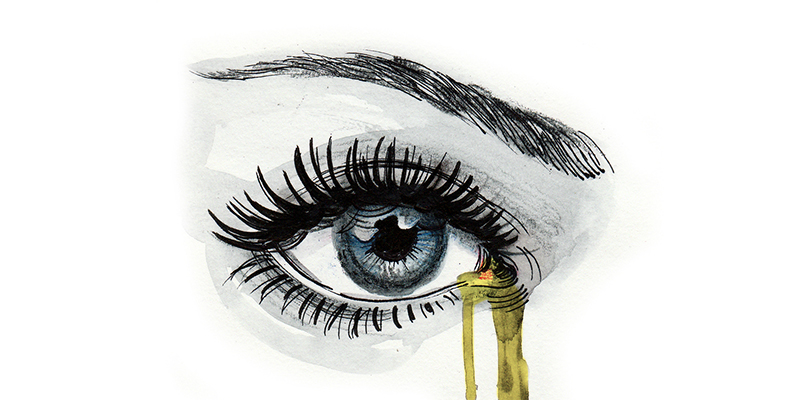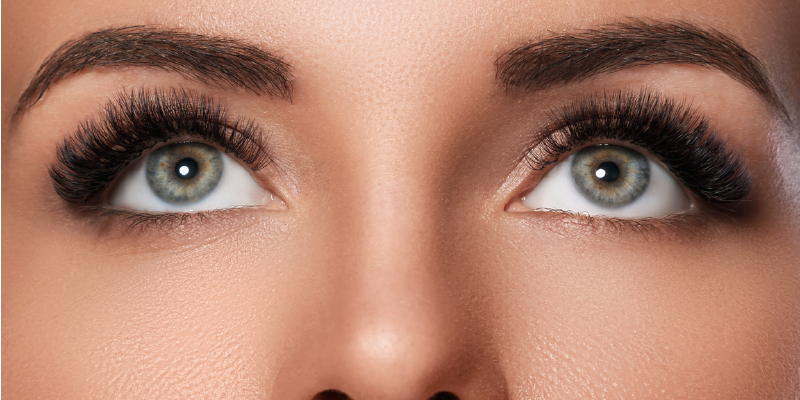Using the right eyelid cleansing wipes can make all the difference when trying to manage dry, red, itchy, or otherwise irritated eyes. There are lots of things that can cause these symptoms, but maintaining good eyelid hygiene is one of the best ways to help alleviate signs of dry, uncomfortable eyes and start seeing the world through clear, clean eyes again. Here are some of the times when lid cleansing wipes can really come in handy.
Blepharitis
If your eyes are red, swollen, crusty, and painful on a regular basis, you could have a common eye condition called blepharitis. There are several contributing factors that can cause blepharitis symptoms, but one of the most notable is a Demodex infestation of the eyelids and eyelashes. Although Demodex mites inhabit nearly everyone’s skin and eyelashes, some people have significantly larger populations than others. Large numbers of Demodex have been linked with the skin condition rosacea as well as blepharitis [1].
To help get rid of Demodex and prevent bacterial infections that can cause signs of blepharitis, use lid cleansing wipes to cleanse your eyelids and lashes daily. The latest research shows that isolated 4-Terpineol, one of the important compounds in tea tree oil, is more effective than tea tree oil at eliminating Demodex [2]. Cliradex is currently the only commercially available product that isolates this ingredient for improved eye hygiene.
Conjunctivitis

More commonly referred to as pink eye, conjunctivitis happens when the outer membrane of the eye, called the conjunctiva, becomes inflamed [3]. Some of the most common symptoms of pink eye include:
- Redness or pink color to the white part of the eye
- Itching
- Burning
- Excessive tearing or discharge
- Crusty eyelids
Pink eye can be caused by both bacterial and viral infections. When a virus is a cause, antibiotics won’t work, and the virus will need to run its course. In the case of a bacterial infection, on the other hand, your eye doctor may prescribe antibiotic eye drops.
In either case, though, wiping the affected eyelid(s) with a gentle eye cleansing wipe can alleviate symptoms of pink eye and help to make you feel more comfortable while your eyes heal.
Stye
Sometimes, a painful red bump will appear near the base of your upper or lower eyelid, seemingly out of nowhere. This is called a stye, and it happens when either the sweat glands or sebaceous (oil) glands at the lash line become blocked and/or infected [3].
Most styes will go away on their own after several days or weeks. In the meantime, applying a warm compress to your eyelid and using cleansing wipes on the area surrounding the eye can help to minimize painful symptoms and prevent further infection and complications.
Allergies

Many Americans are allergic to both indoor and outdoor particles such as dust, mites, pet dander, mold, and pollen. Exposure to these substances can result in red, irritated, itchy eyes, along with a runny nose and sneezing. Although outdoor allergies like hay fever tend to be seasonal in most climates, indoor allergies can be a problem year-round.
If you’re struggling to manage uncomfortable allergy symptoms, try adding eyelid cleansing wipes to your regular skincare routine. Proper eyelid hygiene can remove allergens from the sensitive eye area and therefore help to reduce your symptoms.
Prevention & On-the-Go
In truth, anyone looking to prevent eye infections and other common conditions can benefit from using eyelid cleansing wipes. Your eyes are important, so take steps to prevent eye ailments and infection before they can happen.
Eyelid cleansing wipes can also be a convenient alternative to a washable lid cleansing product like Cliradex Light Foam, especially for when you’re on the move. Just because you’re away from home doesn’t mean you have to sacrifice your beneficial eye hygiene habits!
[1] Demodex Blepharitis: Diagnosis and Treatment – Ocular Surface Research and Education Foundation
[2] Tighe, S., Gao, Y. Y., & Tseng, S. C. (2013). Terpinen-4-ol is the most active ingredient of tea tree oil to kill Demodex mites. Translational vision science & technology, 2(7), 2-2.
[3] Sty (Definition, Causes, Pictures, and Treatment) – MedicineNet




